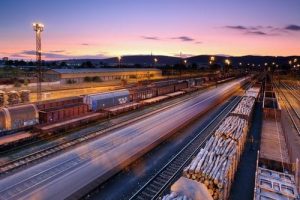
Road Accidents are a Big Cause of Death. Moving Loads By Train Could be a Great and Safer Alternative.
The idea of railroads often conjures up romantic images of days gone by, while semi trucking offers a more pragmatic picture of workers using motorized trailer dollies. Passenger rail travel has certainly fallen out of favor, but the freight rail industry is robust, thanks to its status as a viable alternative to semi freight hauling.
Today’s Thriving Railway System
Freight rail may seem old school, but the U.S. railway system is the envy of other countries around the world. Approximately 40 percent of all intercity cargo is transported via the 140,000-mile railway network.
Unlike many other elements of the U.S. infrastructure, the railroad industry is self-sufficient. President Barack Obama’s 2009 stimulus bill provided major support for freight-rail initiatives with sizable grants, but as a private entity, the industry maintains and improves itself without the help of taxpayers’ money.
In fact, freight rail makes significant contributions to the economy. The industry employs more than 200,000 across the country and pays taxes on the $60 billion it generates each year.
Benefits of Freight Rail
– Freight rail transport is more eco-friendly than long-haul trucking. Trains are three times more energy-efficient than trucks, reducing pollution and dependence on fossil fuels.
– Moving freight by rail means fewer trucks on the road. That, in turn, results in less congestion and fewer vehicle accidents.
– While trucks are preferable for time-sensitive shipments, rail transport is a more efficient way to move heavy loads over long distances, such as raw materials.
Improve Safety and Efficiency with the Electric Yard Dog
Is an outside shunting service costing you time, money and productivity? Visit our website and chat with our friendly sales engineers to find out why motorized trailer dollies from DJ Products are the best solution for your company.
